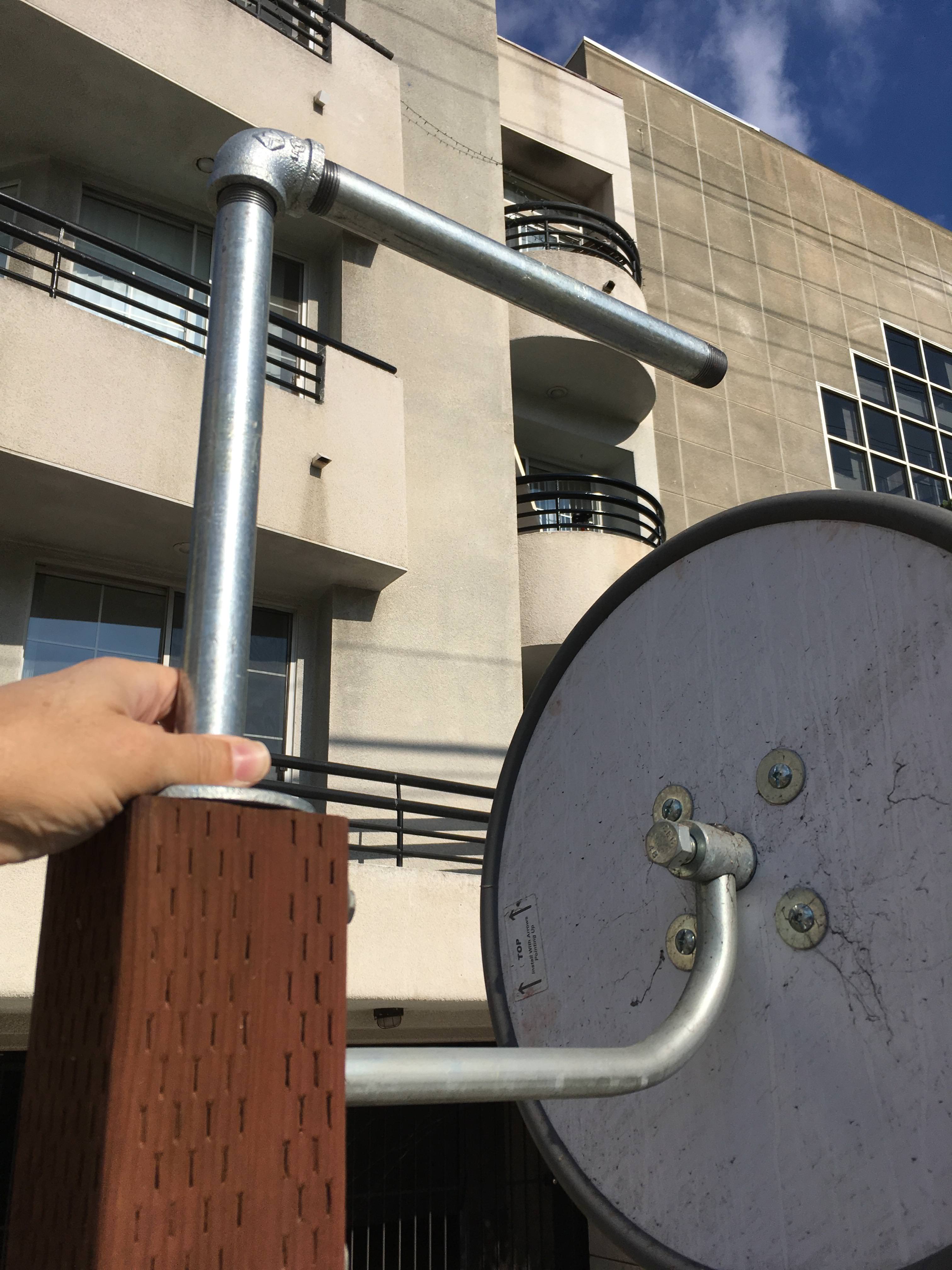Stokestack
New Member
Hi all. I have a non-plumbing scenario that nonetheless involves regular pipe.
I'm using 3/4" pipe to mount a driveway mirror on a vertical wooden beam. The mirror is in a wooden frame that I built, to which I plan to attach a flange to accept the pipe. I plan to get the pipe to the desired position by using relatively short nipples and elbows.
I've attached a picture that shows just the first experimental placement of a couple lengths of pipe for size. I'm mounting a flat mirror above and to the side of the near-useless convex mirror put up by the landlord; this adds to the mounting complexity.

This assembly needs to be adjustable in all directions for testing, and then secured at the desired position and angle. It also needs to be quite strong and resist rotation. Thus the fundamental problem: You never know exactly which direction an elbow is going to end up when it's fully tightened.
It seems to me that the only way of controlling the final angle is by putting a union in every leg of the assembly that requires rotation. Then I can rotate the assembly as desired and tighten the union. Does this make sense? For example, I'll have to replace the vertical pipe in the picture with two shorter lengths and a union in between.
In a real plumbing scenario, where plumbers need to route pipe using elbows, do they tighten the elbows as much as they can until they reach the desired angle, then secure them with sealant? This won't work for my application, but I'm curious.
Any other ideas? Thanks!
I'm using 3/4" pipe to mount a driveway mirror on a vertical wooden beam. The mirror is in a wooden frame that I built, to which I plan to attach a flange to accept the pipe. I plan to get the pipe to the desired position by using relatively short nipples and elbows.
I've attached a picture that shows just the first experimental placement of a couple lengths of pipe for size. I'm mounting a flat mirror above and to the side of the near-useless convex mirror put up by the landlord; this adds to the mounting complexity.

This assembly needs to be adjustable in all directions for testing, and then secured at the desired position and angle. It also needs to be quite strong and resist rotation. Thus the fundamental problem: You never know exactly which direction an elbow is going to end up when it's fully tightened.
It seems to me that the only way of controlling the final angle is by putting a union in every leg of the assembly that requires rotation. Then I can rotate the assembly as desired and tighten the union. Does this make sense? For example, I'll have to replace the vertical pipe in the picture with two shorter lengths and a union in between.
In a real plumbing scenario, where plumbers need to route pipe using elbows, do they tighten the elbows as much as they can until they reach the desired angle, then secure them with sealant? This won't work for my application, but I'm curious.
Any other ideas? Thanks!

